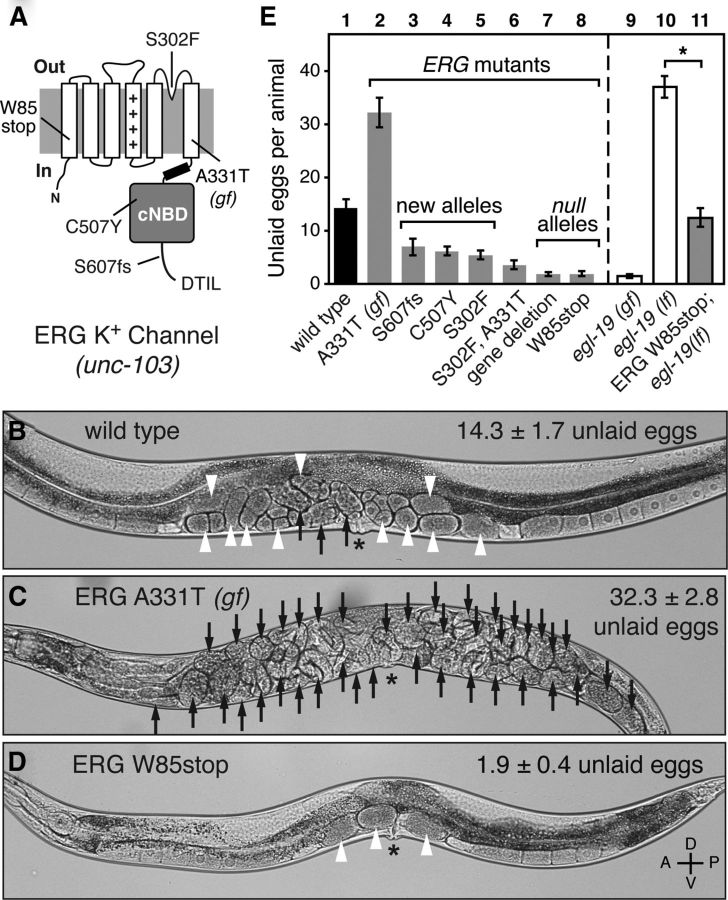Figure 2.
The ERG K+ channel inhibits C. elegans egg-laying behavior. A, Diagram of the C. elegans ERG K+ channel and location of mutations. ++++, voltage-sensor; fs, predicted frameshift mutation; gf, gain-of-function mutation; DTIL, predicted carboxy-terminal PDZ-interaction motif. The W85stop mutant is used as the standard ERG-null background in this work. B–D, Brightfield micrographs of wild-type C. elegans (B), the A331T ERG gain-of-function mutant (C), or the W85stop ERG-null mutant (D). Black arrows indicate eggs with >8 cells, and white arrowheads indicate early-stage eggs of ≤8 cells. The average number of unlaid eggs per animal (n = 30) is indicated ±95% confidence intervals. The A331T gain-of-function mutant accumulates unlaid eggs because it rarely lays them, while the ERG-null mutant retains only ∼2 of the most recently produced eggs since it lays eggs too frequently. Asterisk, vulva; axes indicating anterior (A), posterior (P), dorsal (D), and ventral (V) are shown. E, Quantification of unlaid eggs in animals bearing ERG K+ channel and L-type Ca2+ channel mutations. Wild-type animals (bar 1) were compared with the ERG A331T gain-of-function mutant (bar 2) and ERG loss-of-function mutants (bars 3–8). Gain-of-function (gf) and loss-of-function (lf) mutations in egl-19, which encodes the sole α1 subunit of the C. elegans L-type Ca2+ channel, were tested individually or in combination with an ERG-null mutation. Error bars, 95% confidence intervals. Asterisk, p < 0.0001 (t test); n = 30 animals per genotype.

